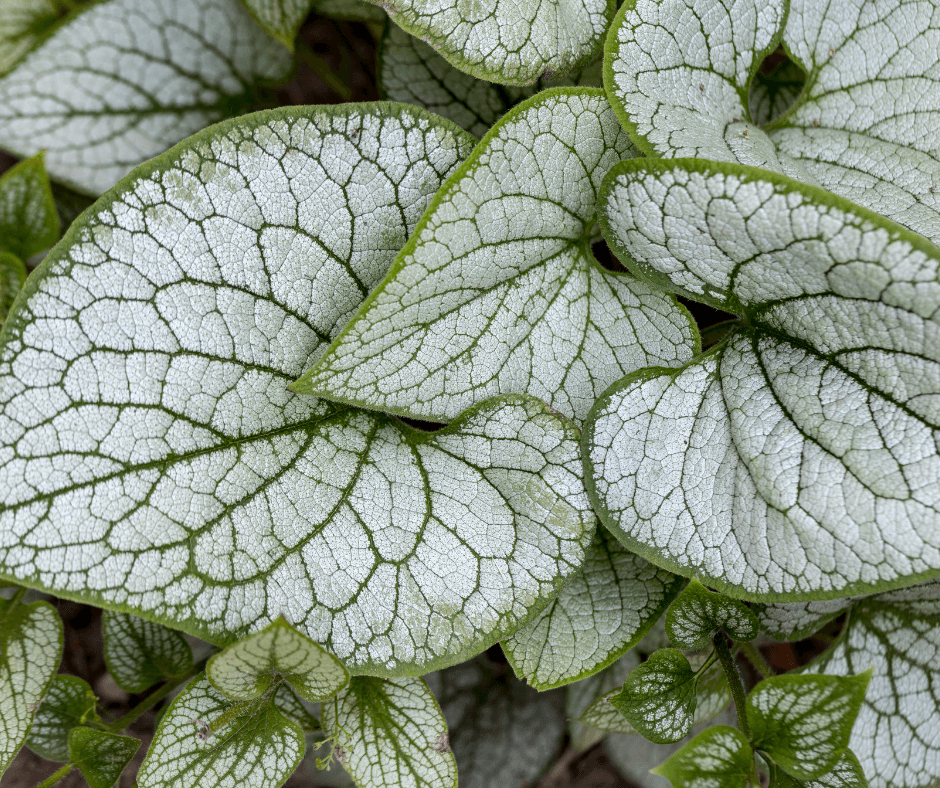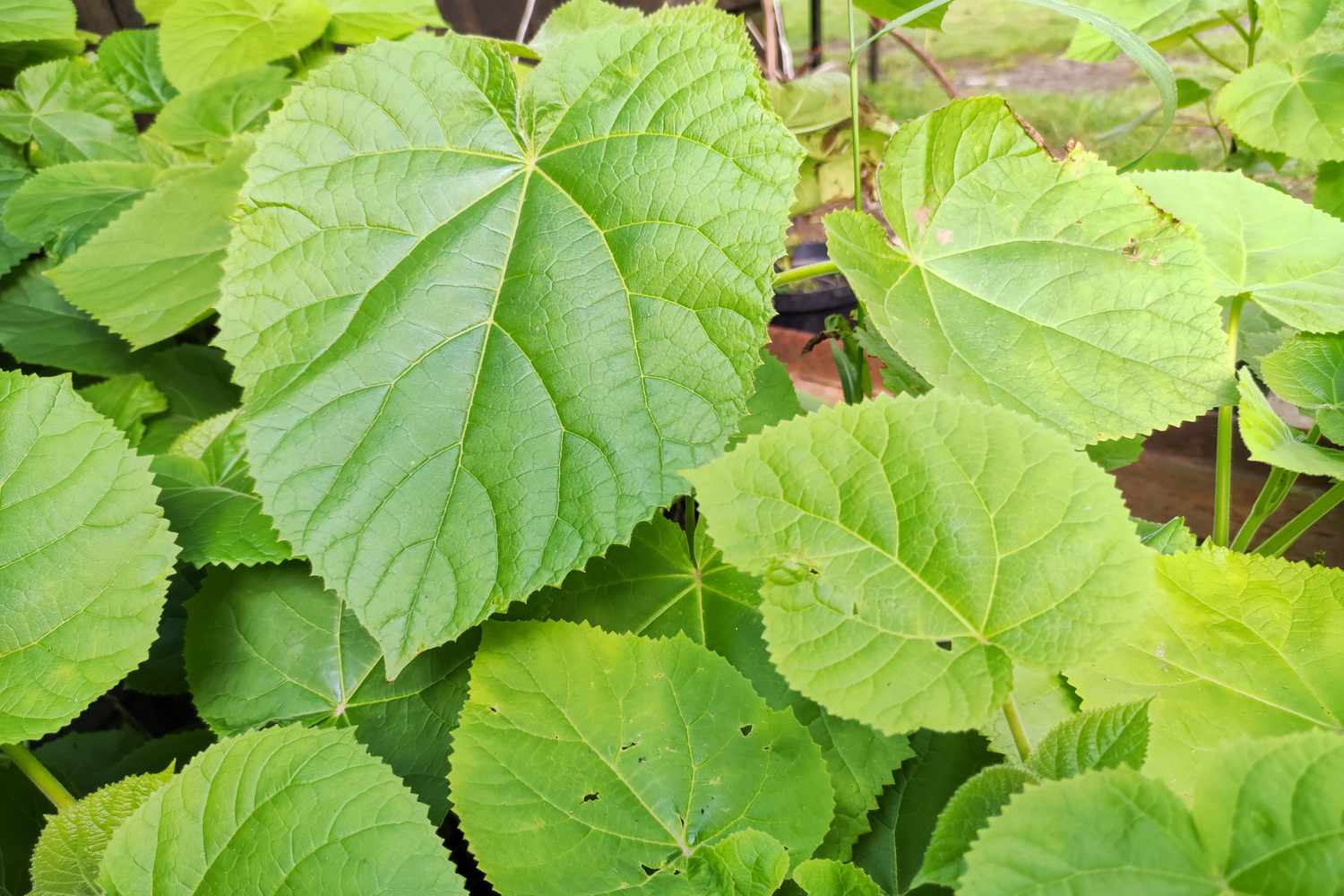As an Amazon Associate, I earn from qualifying purchases.
Outdoor plants with heart-shaped leaves add charm and beauty to gardens. Popular choices include the Elephant Ear, Hosta, and Redbud.
Heart-shaped leaves capture attention and bring a touch of romance to any outdoor space. The Elephant Ear plant, known for its large, striking leaves, thrives in warm climates and provides a tropical feel. Hostas, with their lush foliage, are perfect for shaded areas and come in various shades of green, blue, and yellow.
The Redbud tree offers stunning heart-shaped leaves that turn vibrant colors in the fall, making it a seasonal favorite. These plants not only enhance the aesthetic appeal of gardens but also create a welcoming and enchanting atmosphere.

Credit: www.reddit.com
Introduction To Heart-shaped Leaves
Outdoor plants with heart-shaped leaves bring a unique charm to gardens. These plants are not only beautiful but also carry deep meanings. They can transform any space into a serene retreat.
Unique Appeal
Heart-shaped leaves stand out due to their distinct look. They capture attention and add elegance to outdoor spaces. The lush green leaves often have a smooth texture.
Many heart-shaped leaf plants also have vibrant flowers. This combination makes them a favorite among garden enthusiasts. Examples include the Philodendron and the Hoya.
| Plant | Unique Feature |
|---|---|
| Philodendron | Large glossy leaves |
| Hoya | Fragrant flowers |
Symbolic Meaning
Heart-shaped leaves often symbolize love and affection. They are perfect for gifting to loved ones. Many cultures associate these leaves with positive emotions.
- Love – Represents deep affection.
- Harmony – Brings peace to the environment.
- Growth – Symbolizes personal development.
In various traditions, these plants are used in ceremonies. Their presence brings a sense of calm and beauty to any setting.
Popular Heart-shaped Leaf Plants
Heart-shaped leaves add charm to any garden. These plants are beautiful and easy to care for. Let’s explore some popular ones.
Philodendron
Philodendron plants are known for their lush, green leaves. They thrive in shaded areas. Their heart-shaped leaves bring a tropical feel to gardens. Philodendron plants are also easy to grow.
- Light: Indirect sunlight
- Water: Moderate, keep soil moist
- Soil: Well-draining soil
Hoya
The Hoya plant, also called Wax Plant, is unique. Its heart-shaped leaves are thick and waxy. Hoya plants can bloom with star-shaped flowers. These plants are perfect for hanging baskets.
- Light: Bright, indirect light
- Water: Allow soil to dry between watering
- Soil: Light, well-draining soil
Anthurium
Anthurium plants are famous for their bright, heart-shaped leaves. They also have striking red flowers. These plants love warmth and humidity. Anthurium adds a pop of color to any garden.
- Light: Indirect light
- Water: Keep soil evenly moist
- Soil: Rich, well-draining soil
Growing Conditions
Outdoor plants with heart-shaped leaves can add charm to any garden. To help them thrive, understanding their growing conditions is crucial. This section will cover soil preferences and watering needs to ensure your plants flourish.
Soil Preferences
Heart-shaped leaf plants generally prefer well-draining soil. This prevents waterlogging, which can harm roots. Adding organic matter like compost can improve soil structure. Here are some soil types suitable for these plants:
- Loamy soil
- Sandy soil
- Clay soil, if amended with compost
Testing your soil’s pH is also important. Most heart-shaped leaf plants thrive in slightly acidic to neutral soil, with a pH range of 6.0 to 7.0. You can use a pH testing kit to check your soil’s acidity.
Watering Needs
Proper watering is essential for the health of heart-shaped leaf plants. They generally prefer consistent moisture but dislike being waterlogged. Here are some key watering tips:
- Water deeply once a week.
- Ensure the top 1-2 inches of soil are dry before watering again.
- Use mulch to retain soil moisture.
In hot climates, more frequent watering might be necessary. Always water at the base of the plant to avoid wetting the leaves, which can lead to fungal diseases.
Sunlight Requirements
Understanding the sunlight requirements for outdoor plants with heart-shaped leaves is crucial. These plants have unique needs to thrive and show their best foliage. This section will guide you through the best practices for ensuring they get the right amount of sunlight.
Direct Sunlight
Some outdoor plants with heart-shaped leaves prefer direct sunlight. This means they need at least six hours of sunlight each day. Here are a few examples:
- Morning Glory – Thrives in full sun, blooms beautifully.
- Sweet Potato Vine – Loves the sun, vibrant leaf colors.
- Creeping Fig – Grows well in sunny spots, fast-growing.
Ensure these plants are placed in areas with no shading. Direct sunlight helps them grow strong and healthy.
Shade Tolerance
Some heart-shaped leaf plants are shade-tolerant. These plants can grow well with limited sunlight. Ideal for gardens with more shade. Here are a few shade-tolerant plants:
| Plant | Light Requirement |
|---|---|
| Hosta | Partial to full shade |
| Caladium | Partial shade |
| Heartleaf Philodendron | Low to medium light |
Remember to keep these plants out of direct sunlight. Too much sun can damage their leaves. They thrive best in shaded areas with indirect light.
Planting Tips
Planting outdoor plants with heart-shaped leaves can be a delightful experience. To ensure healthy growth, follow these simple planting tips. This guide covers essential aspects like spacing and mulching.
Spacing
Proper spacing is crucial for plant health. It allows each plant to receive enough light and air. Here are some tips:
- Keep at least 12 inches between small plants.
- For larger plants, ensure 18-24 inches of space.
- Use a measuring tape to maintain consistency.
Correct spacing prevents overcrowding. It also reduces the risk of diseases.
Mulching
Mulching helps retain soil moisture and suppresses weeds. Here’s how to mulch effectively:
- Choose organic mulch like straw or bark chips.
- Apply a 2-3 inch layer around the plant base.
- Leave a gap around the stem to avoid rot.
Mulching also regulates soil temperature. It keeps roots cool in summer and warm in winter.
| Mulch Type | Benefits |
|---|---|
| Straw | Retains moisture, decomposes fast |
| Bark Chips | Long-lasting, decorative |
Choose the best mulch for your garden. Mulching ensures your heart-shaped leaf plants thrive.
Pest And Disease Management
Outdoor plants with heart-shaped leaves are beautiful and unique. They can, unfortunately, attract various pests and diseases. Effective management helps keep your plants healthy and thriving. Below, we explore common pests and preventive measures.
Common Pests
Several pests can target your heart-shaped leaf plants. Here are some of the most common:
- Aphids: Small, soft-bodied insects that suck plant sap. They can cause yellowing and curling leaves.
- Spider Mites: Tiny pests that spin webs and cause speckled leaves.
- Mealybugs: White, cotton-like insects that feed on plant juices. They can cause stunted growth.
Preventive Measures
Taking steps to prevent pest infestations is crucial. Here are some effective methods:
- Inspect Regularly: Check your plants weekly for any signs of pests.
- Use Neem Oil: Spray neem oil to deter common pests naturally.
- Encourage Beneficial Insects: Ladybugs and lacewings feed on harmful pests.
| Pest | Symptoms | Control Method |
|---|---|---|
| Aphids | Yellowing and curling leaves | Neem oil spray |
| Spider Mites | Speckled leaves | Introduce ladybugs |
| Mealybugs | Stunted growth | Wipe with alcohol |
Managing pests and diseases is vital for your plant’s health. Regular inspections and natural remedies will help your outdoor plants with heart-shaped leaves thrive.
Seasonal Care
Caring for outdoor plants with heart-shaped leaves involves understanding their seasonal needs. This ensures healthy growth and vibrant foliage throughout the year. Let’s explore the key practices for each season.
Spring Preparation
Spring is a critical time for your heart-shaped leaf plants. Start by pruning dead or damaged leaves. This encourages new growth. Fertilize the soil with a balanced, slow-release fertilizer. This provides essential nutrients for the growing season.
Consider mulching around the base of the plants. Mulch helps retain moisture and suppresses weeds. Ensure the plants get ample sunlight. Heart-shaped leaf plants thrive in bright, indirect light. Water them regularly, but avoid waterlogging. Proper hydration is key for robust growth.
Winter Protection
Winter can be harsh on outdoor plants. Protect your heart-shaped leaf plants from frost damage. Cover them with burlap or frost cloth. This provides an extra layer of insulation. Water the plants deeply before the first freeze. Moist soil retains heat better than dry soil.
Move potted plants to a sheltered location. This could be a garage or a greenhouse. If the plants are in the ground, add an extra layer of mulch. This helps keep the roots warm. Avoid pruning in winter. Pruning can expose the plants to more cold damage.
For areas with extreme winters, consider using cold frames. These structures provide extra warmth and protection. Regularly check for signs of winter damage. Early intervention can save your plants.
| Season | Care Tips |
|---|---|
| Spring |
|
| Winter |
|
By following these seasonal care tips, your outdoor plants with heart-shaped leaves will thrive year-round. Keep them healthy and beautiful with proper care and attention.

Credit: fafard.com
Design Ideas
Looking to transform your garden with unique plants? Consider outdoor plants with heart-shaped leaves. They add charm and elegance to any outdoor space. Let’s explore some creative design ideas to make the most out of these beautiful plants.
Garden Layouts
Designing a garden with heart-shaped leaves can be exciting. Here are some tips:
- Pathway Borders: Use heart-shaped plants to line your garden paths.
- Focal Points: Create a focal point with a large heart-leaved plant.
- Mix and Match: Combine different heart-shaped plants for variety.
| Layout Type | Suggested Plants |
|---|---|
| Pathway Borders | Sweetheart Hoya, Anthurium |
| Focal Points | Elephant Ear, Redbud Tree |
| Mix and Match | Caladium, Cyclamen |
Container Gardening
Container gardening with heart-shaped leaves is perfect for small spaces. Try these ideas:
- Hanging Baskets: Plant heart-shaped vines in hanging baskets.
- Patio Pots: Use large pots for heart-leaved shrubs.
- Window Boxes: Fill window boxes with small heart-leaved plants.
Here are some plant suggestions for containers:
- Hanging Baskets: Sweetheart Hoya, Philodendron
- Patio Pots: Elephant Ear, Hosta
- Window Boxes: Cyclamen, Caladium

Credit: www.oregonlive.com
Frequently Asked Questions
What Outdoor Plants Have Heart-shaped Leaves?
Many outdoor plants have heart-shaped leaves, such as Hosta, Cyclamen, and Redbud. These plants are popular for their unique leaf shapes and aesthetic appeal.
How To Care For Heart-shaped Leaf Plants?
Caring for heart-shaped leaf plants involves regular watering, proper sunlight, and occasional fertilization. Make sure the soil is well-drained to prevent root rot.
Do Heart-shaped Leaves Indicate Plant Health?
Yes, heart-shaped leaves often indicate a healthy plant. However, yellowing or wilting leaves can signal issues like pests or improper care.
Are Heart-shaped Leaves Common In Outdoor Plants?
Heart-shaped leaves are quite common in many outdoor plants. They add a unique visual element to gardens and landscapes.
Conclusion
Heart-shaped leaves add charm to any outdoor garden. They bring beauty and a touch of elegance. Choose plants like Anthurium and Sweetheart Hoya for a stunning effect. Enjoy the natural beauty and tranquility these unique plants offer. Transform your garden into a serene oasis with heart-shaped foliage.

